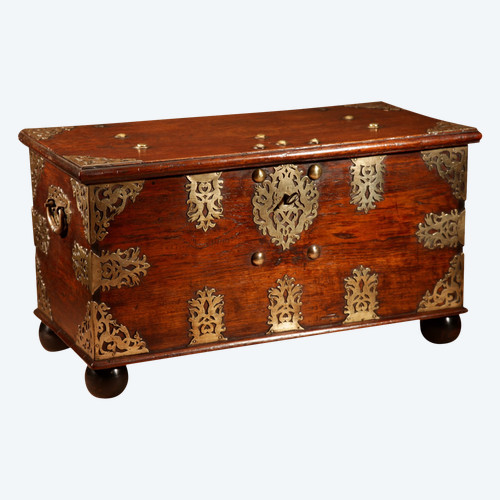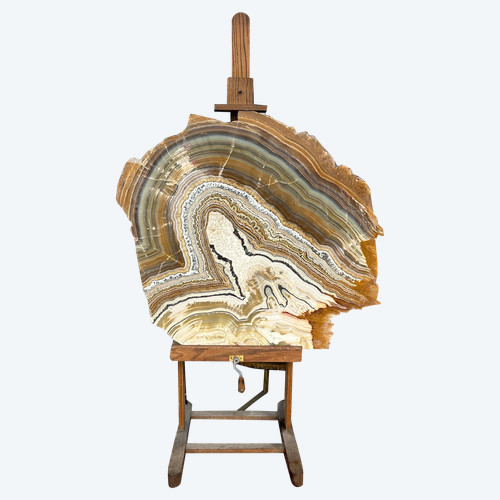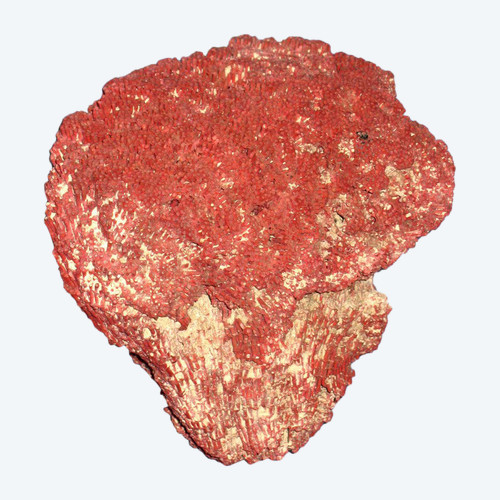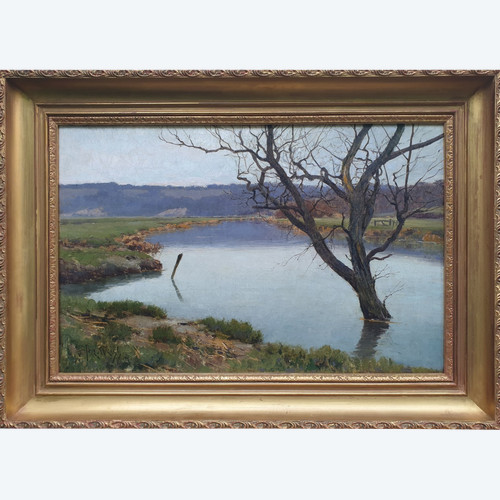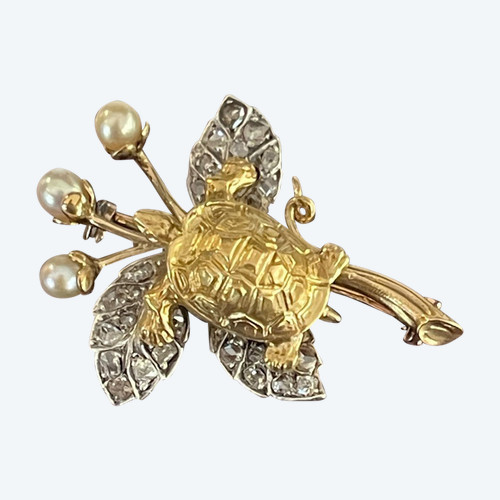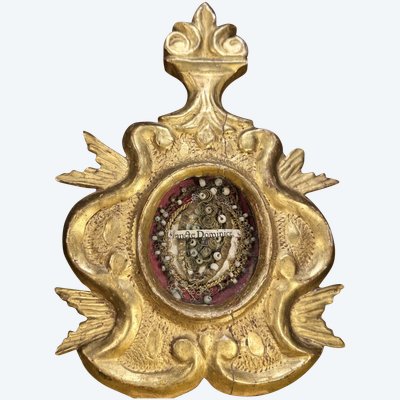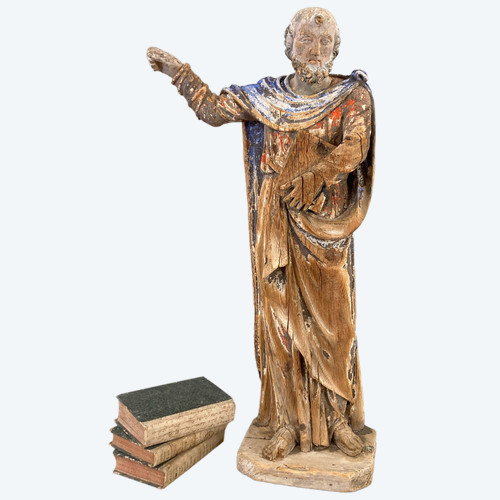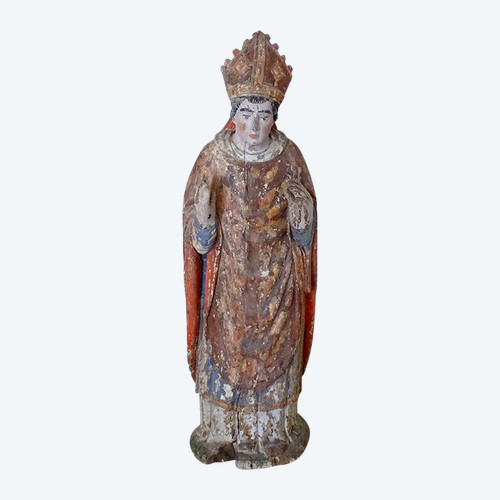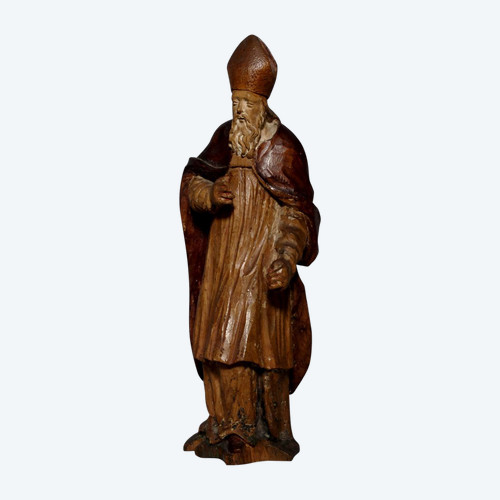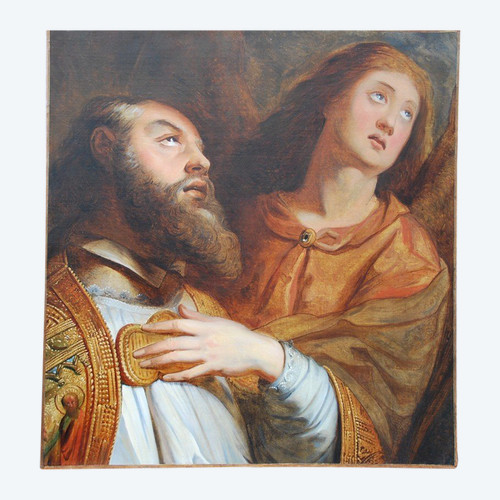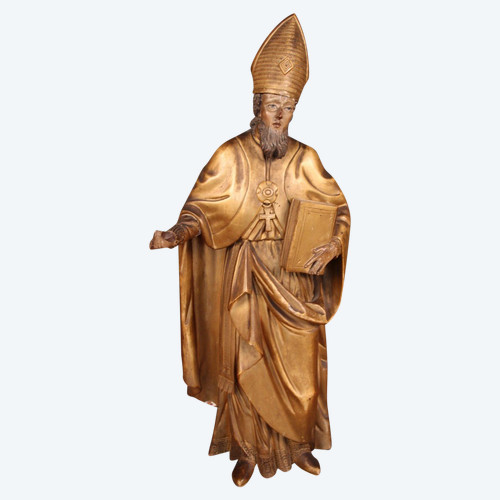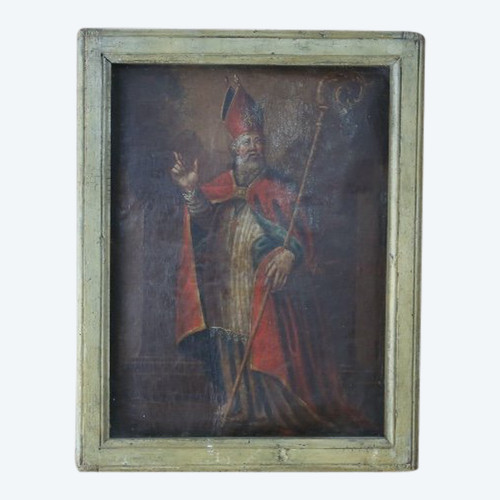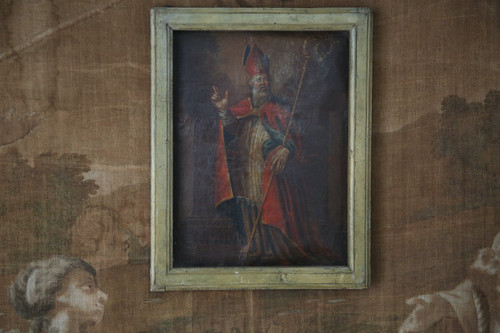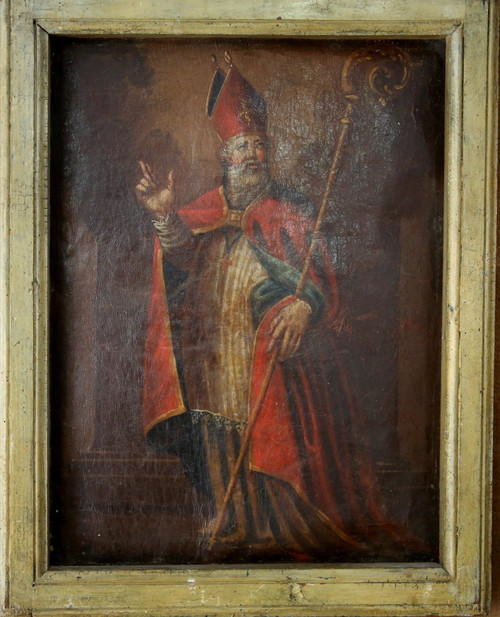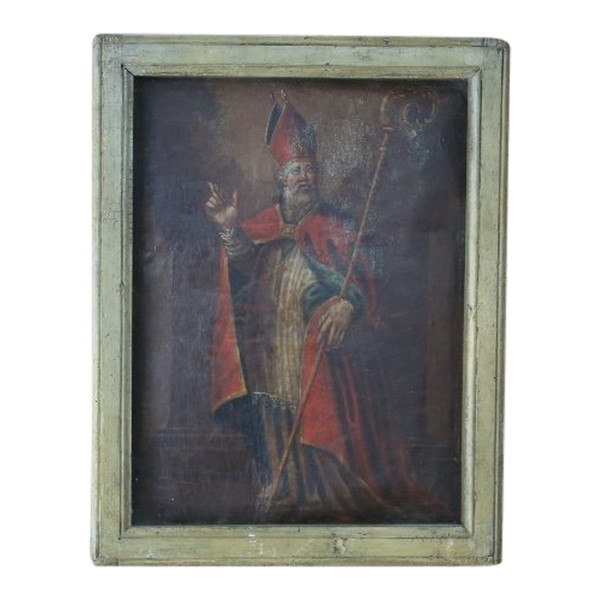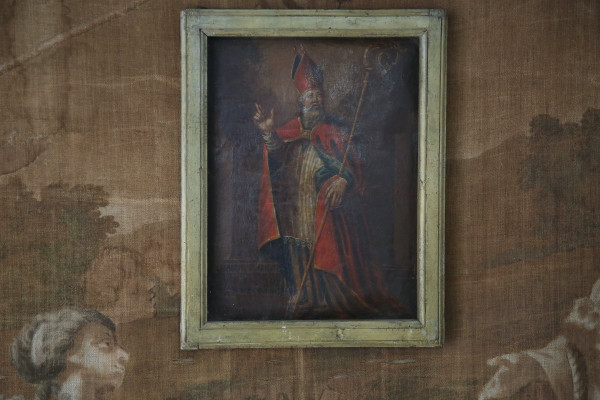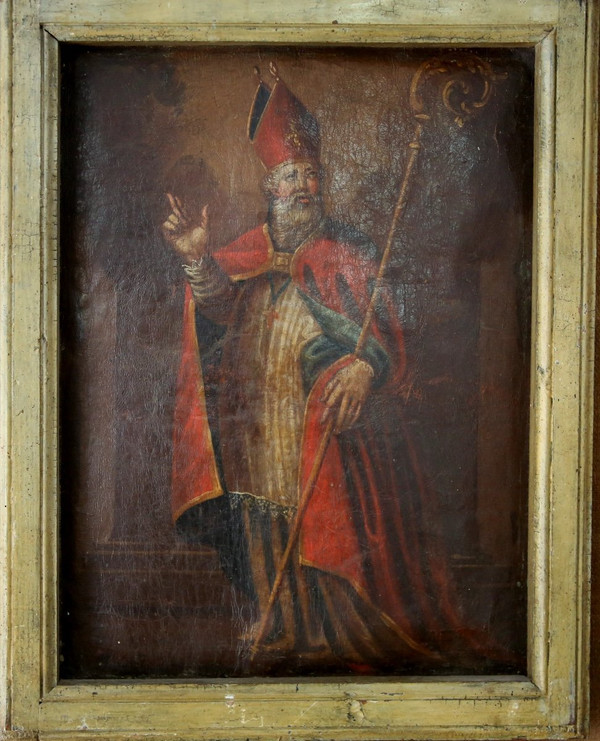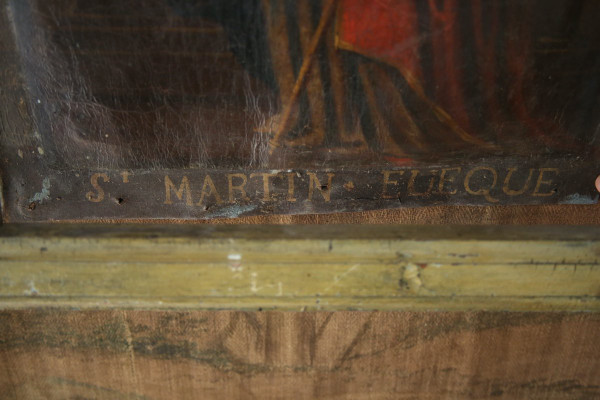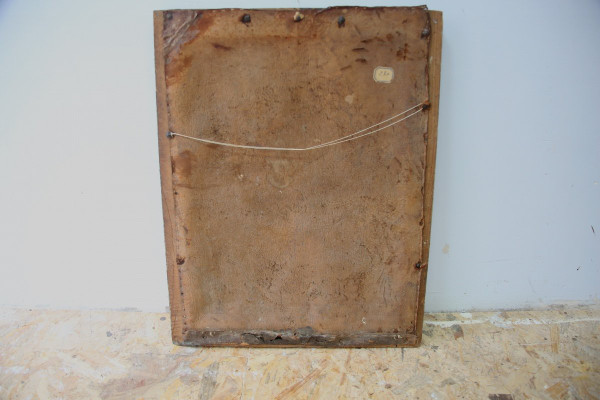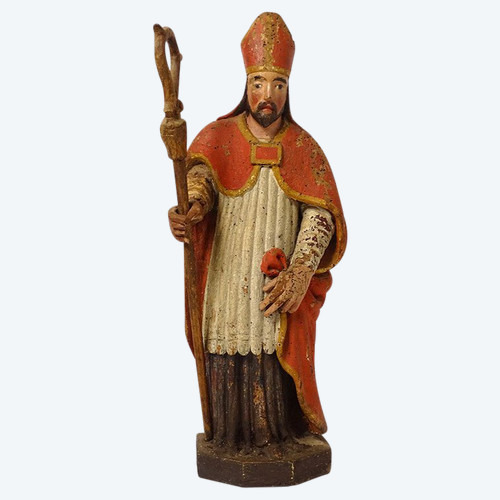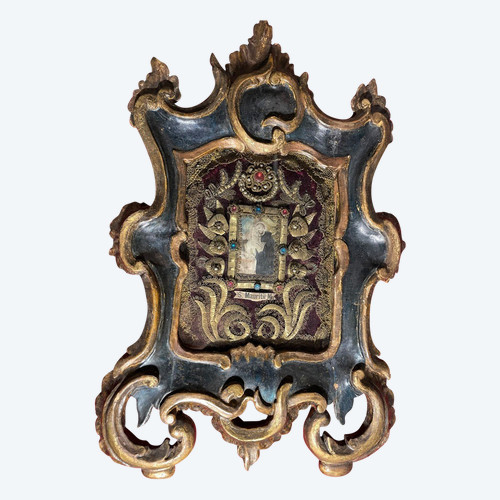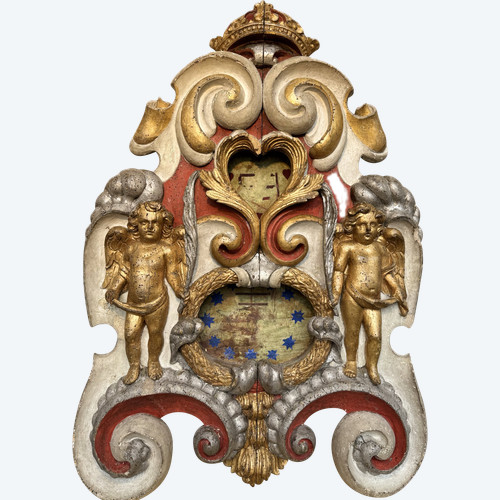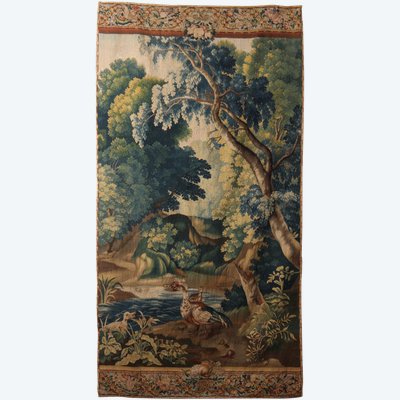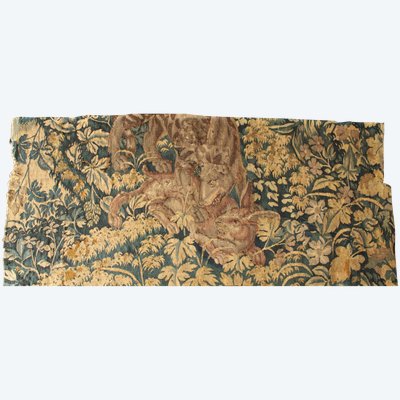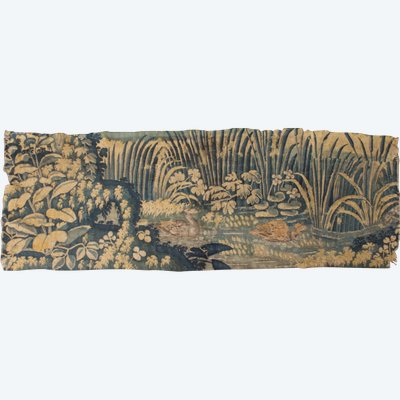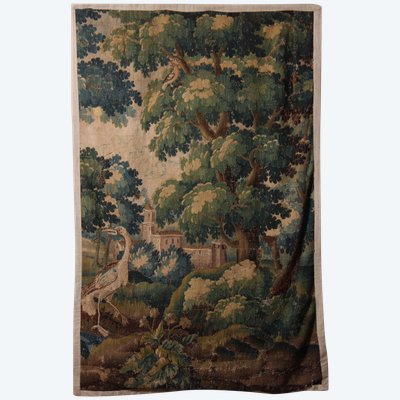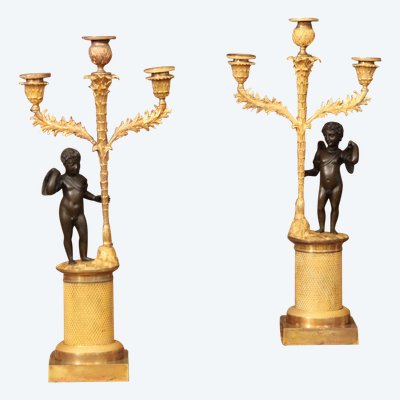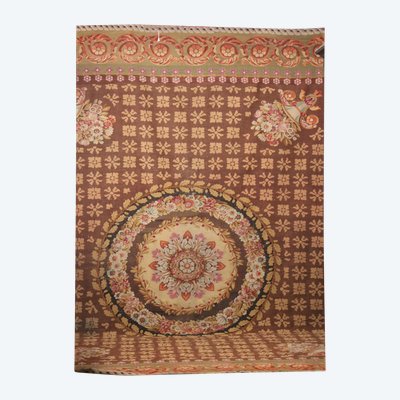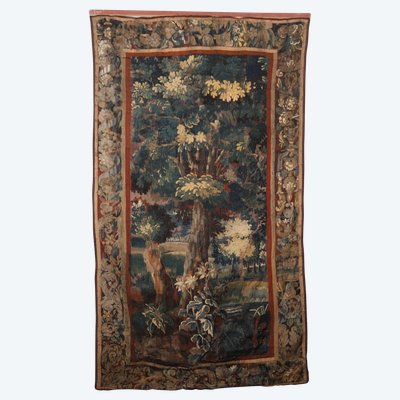This description has been translated and may not be completely accurate. Click here to see the original
This painted leather depicts Bishop Saint-Martin blessing against a background of brownish clouds.
Looking skyward, the bishop holds his crosier in his left hand, and with his right hand, he makes the sign of blessing (a Christian gesture and iconographic representation that calls down heavenly protection on people). The Saint wears the episcopal vestments and accessories: mitre, pectoral cross, cassock (the long brown robe worn under the liturgical vestments), ratchet (the white knee-length vestment with lace trim at the ends) and a ceremonial red cape.
The inscription "St MARTIN EVEQUE" appears at the bottom.
This is a French work from the early 18th century, most probably from a workshop in the Rhône valley.
Several arguments suggest that this painted leather was most probably part of a set of several leathers sewn together to form an antependium, of which it would have been the central tile:
old seams still visible
a surviving antependium with the same painted motif as the central tile, from the church of Saint-Germé d'Ilhan (Bordères-Louro, Hautes Pyrénées)
(cf. instructions for this work: https://www.pop.culture.gouv.fr/notice/palissy/PM65000133)
Painted and gilded leathers, mainly used to make wall hangings, were also widely used to make religious decorations such as altar fronts. Altar fronts (or antependia) were used to decorate church choirs and secondary altars. The front of the altar, immediately in front of the audience, held a privileged place and had to be elaborately decorated. It could be carved (wood, stone, stucco), painted canvas, richly woven fabric or gilded and painted leather.
French altar fronts all follow the same pattern: several vertically arranged tiles were sewn together, and three to six tiles were usually required to obtain the desired width (Jean-Pierre Fournet "Cuirs dorés, cuirs de Cordoue : Un art européen " 2019).
The painted leather we are looking at appears to be the central tile of such a set. Old seams still visible show that the antependium had a border at the top and bottom.
Once cut up, the central tile depicting the Saint was folded back a few centimetres at the bottom to be framed. Today's modestly made frame conceals the lower part with the inscription.
Good condition
Dimensions:
width: 42 cm, height: 57 cm
(with frame) width: 45.5 cm, height: 58 cm
Ref: 1C80O4DUKM
 Gold, Silver and Diamond "Turtle" Brooch
1.900 € EUR
Gold, Silver and Diamond "Turtle" Brooch
1.900 € EUR

